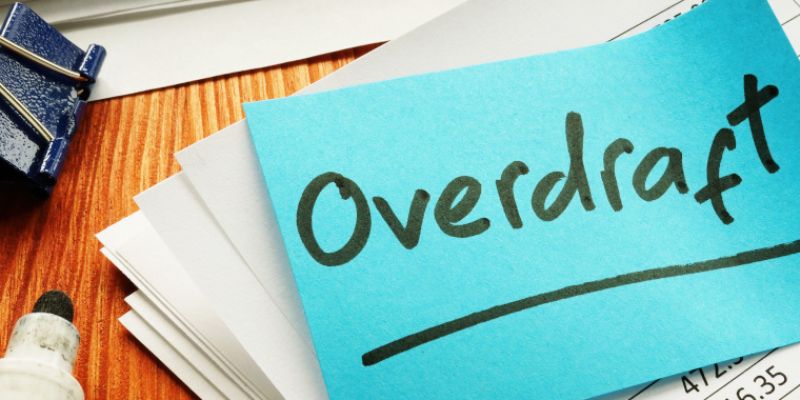Using a savings account to prepare for the first big purchases, such as household bills or vacations, is essential to financial planning. But saving money can become more complicated when it comes to understanding the details—such as whether or not you can overdraft your savings account.
In this blog post, we'll explore some commonly asked questions about overdrafts and how they affect your savings account so that you can be better informed about how best to use these accounts.
Common Fees For Savings Accounts To Watch Out For

When it comes to fees, banking institutions can be quite creative. It's important to familiarize yourself with the common fees associated with savings accounts to ensure you only pay what is necessary.
The most typical fee is a monthly maintenance fee. Wells Fargo charges a $12 per month fee if your balance falls below $3,500; TD Bank charges a $5 fee per month (with no fee in the first year); Bank of America has an $8 monthly maintenance fee if your daily balance falls below $500; and Chase has a $5 monthly maintenance fee waived if you maintain a minimum balance over $300 or have qualifying accounts linked or set up automatic saves.
You should also be aware of savings withdrawal limit fees. The fee amount will vary depending on your bank, but typically, if you withdraw more than six times in a month, you'll be charged a fee. Chase charges $5 for every additional withdrawal after the sixth one.
Other possible fees include early closure fees (if you close the account within a certain period after opening), transfer fees, and paper statement fees.
Understanding which fees your bank will charge for their savings accounts is crucial. Overlooking these details can leave you with more out-of-pocket expenses than anticipated, so double-check the terms before committing!
The Dangers of Carrying a Negative Balance In Your Savings Account

A negative balance in your savings account can pose serious financial consequences.
- When you have a negative balance, you need the cushion to help with unexpected expenses or cover overdrafts in your checking account. This means you can incur costly overdraft fees and not have access to money when you need it most.
- Some banks will charge an extended overdraft fee if your account stays negative for more than a few days, further increasing the debt that needs to be paid off.
- Moreover, suppose the account stays negative for an extended period (usually several months). In that case, the bank may even close your account and report you to ChexSystems – a credit bureau for banks – which could make it difficult to open an account with another bank for years.
- Staying on top of your savings account and maintaining a positive balance is important. Regularly checking your accounts and setting up notifications through banking apps can help you avoid overdrafts and negative balances, thus helping you save money in the long run.
If you find a negative balance, it's best to contact your bank as soon as possible and make arrangements to pay off the debt. Ignoring it could lead to more costly consequences like legal action or damages that will impact your credit score in the future.
If my checking balance is negative, may I withdraw money from my savings?
Understanding how to withdraw money from your savings account when your checking account is negative can help you manage your finances more effectively. That's why knowing how overdrafts work and how they affect your savings account is important.
In certain circumstances, you may be able to withdraw funds from a savings account even while your checking balance is negative. These consist of:
Making A Deposit To Savings
If you deposit to your savings account while your checking balance is negative, it may be better to use that money to bring the checking balance closer to positive territory. This will help you avoid overdraft fees and the risk of transactions being suspended in your account.
Not Linking/Having Overdraft Protection
This strategy can be beneficial if you want to ensure you only spend what you have or avoid overdraft fees. For example, some banks offer debit card coverage that can cover essential purchases like groceries and gas without linking up with your savings account.
However, there will likely be a $34 fee for each overdraft which could push your checking account into the red despite a positive balance in your savings account.
Bank Wasn't Able To Cover Overdraft
Sometimes, the bank may need help to totally cover a checking overdraft with your savings so it won't transfer the full balance over. However, it may have transferred money in increments (for example, $25 at a time), which could leave a small remainder sitting in your account that you can withdraw via an ATM.
How To Keep Your Savings Account From Being Overdrawn
Keeping your savings account from being overdrawn can be challenging, especially if you live on a tight budget or have an unpredictable income. However, several strategies can help ensure your savings remain intact and ready for use when the time comes
.
Monitor Your Balance
First and foremost, monitor your savings account balance regularly. Most banks offer digital tools like online banking or mobile apps, making tracking transactions and daily spending easier. Consider setting up automatic notifications to alert you when funds dip below a certain threshold so you'll always know where things stand.
Set Up an Emergency Fund
It is important to have enough money in your savings account to cover unforeseen expenses which may arise. Building an emergency fund can provide a cushion to fall back on if needed. Start by setting up a separate savings account and make monthly regular, automatic contributions from your primary banking account.
Opt For Overdraft Protection
Look into the overdraft protection services offered through banks and credit unions. Most offer access to funds at no cost. However, some may charge fees or interest for advances, so read the fine print before signing up.
Also, remember that not all accounts qualify for these services, so check with your financial institution beforehand if you need it.
Choose New Banking Accounts Carefully
One way to avoid potential overdrafts is by taking the time to research banking accounts beforehand. Many banks and credit unions offer free or low-fee savings accounts with no minimum balance requirement, making keeping a buffer on hand always easier. Some may even waive fees if you meet certain requirements, such as maintaining a minimum balance or using direct deposit for deposits.
FAQs
Does overdraft work on a savings account?
Yes, it is possible to overdraft a savings account if the bank allows transfers between accounts and there isn't enough money.
Can I withdraw from savings if checking is negative?
You can withdraw from savings even if your checking balance is negative.
How long can my savings account be negative?
It depends on the bank, but generally speaking, a negative account balance can persist for several months before it closes your account and reports you to ChexSystems. It is best to contact your bank as soon as possible if you find yourself in this situation so that arrangements can be made to pay off any debt.
Conclusion
Using a savings account for big purchases is integral to financial planning. But with all the details involved, it can be difficult to understand how overdrafts and negative balances affect your savings account. To ensure you're using your accounts most effectively and protecting yourself against overdraft fees, staying informed about how these accounts work and available options are important. Taking the time to monitor your balance, set up an emergency fund, opt for overdraft protection services, and choose new banking accounts carefully can help keep your savings account from being overdrawn.




